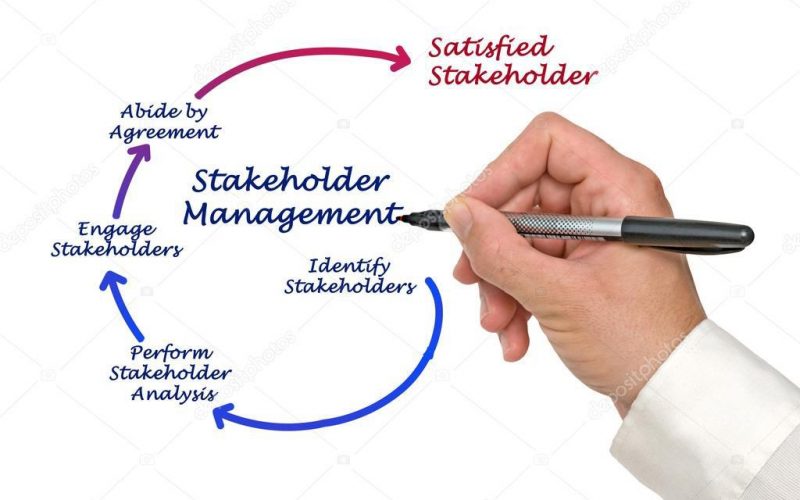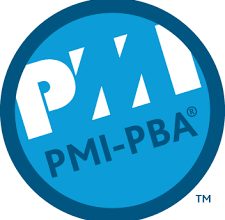Are you effectively managing your stakeholders? But first, do you know who all of your stakeholders are? Have you ever noticed that you missed a specific criterion after completing half of a project? This could have been a requirement from an influential individual who was not involved as much as he or she should have been. According to the most recent poll, just 36% of respondents were sure that stakeholders and key members were fully committed to the project’s goals and advantages. Unless you have been fortunate enough not to be in an awkward circumstance like the one described above, here is your opportunity to avoid preventing such situations from occurring. In this post, you’ll learn how to plan for your project stakeholder management.
Who is a Stakeholder?
Now that you understand the significance of stakeholder management, let us begin with the fundamentals of stakeholder management, i.e. who is a stakeholder.
A stakeholder is someone who has an interest in a firm and can influence or be influenced by it. Investors, employees, customers, and suppliers are the major stakeholders in a normal firm. However, as corporate social responsibility keeps gaining traction, the notion expands to encompass several other things such as communities, governments, and trade groups.
A stakeholder is somebody who will be affected by a project. Stakeholders are broadly classified as “Internal Stakeholders” and “External Stakeholders.”
Internal stakeholders are people who work for your company. They include your Project sponsor, Project owner, Project team, and anybody or group who contributes to or benefits from the project’s outcome. It also includes those who may suffer a negative impact as a result of the initiative. For example, some workers may need to re-skill as a result of automation, or they may be relocated.
External stakeholders are those who are not part of your organization. These could include vendors, customers, shareholders, the government, auditors, and so on.
You can go to our previous post and learn more about stakeholder analysis and how to know your key influencers.
What is Project Stakeholder Management?
It is critical to manage the stakeholders and their expectations. As a result, Stakeholder Management is an essential component of Project Management. All project stakeholders must be identified. Small projects may have a small number of stakeholders, whereas larger projects may have a huge number of stakeholders.
Not all stakeholders would probably be treated equally. Each will have its own set of standards and expectations. As a result, it is critical to identify each stakeholder. This guarantees that no stakeholders are overlooked. The next stage is to categorize the stakeholders so that they can be suitably involved. You are less likely to overlook any critical needs if you have both of these in place.
Project Stakeholder Management includes identifying stakeholders and analyzing their influences and expectations. Yes, because of their power, they can impact project outcomes. As a result, you must devise acceptable strategies for collaborating with stakeholders and carrying out the project. Each stakeholder needs the appropriate amount of communication. Before delving into Project Stakeholder Management, let’s take a look at communication.
Communication Management
Project Communications Management ensures that project information is planned, created, collected, distributed, stored, retrieved, controlled, and monitored in a timely and suitable manner. Communication frequently has numerous dimensions that must be examined.
- Internal (inside your project) and external (within your corporation) (vendors, customers, other projects, and organizations)
- Formal (minutes, reports, and briefings) and informal (meetings) (memos, emails, ad-hoc discussions)
- Horizontal (between managers & subordinates in the organization) as well as horizontal (this is between peers)
- Unofficial (annual report, newsletters) and official (annual report, newsletters) (communications that are off the record)
- Oral and written – verbal (involves vocal inflections) and nonverbal (body language)
You should now understand why communication is critical for stakeholder management. Communication abilities may include, but are not limited to:
- Paying close attention and efficiently listening
- Probing and questioning concepts or events to gain a greater understanding
- Obtaining facts to corroborate or identify information
- Setting and managing expectations in advance
- Team knowledge should be increased through training.
- Persuading a group, an individual, or an organization to do something.
- Motivating others to offer reassurance and encouragement
- Recapitulating, summarizing, and determining the next step
- Coaching will help you enhance your performance and attain your goals.
- Negotiating mutually beneficial deals
- resolving issues to avoid any harmful consequences
How to Create a Stakeholder Management Plan or Strategy
Follow these five stages to ensure that all of your bases in the stakeholder management plan are covered to summarize all of the lessons you just learned and put them into effect.
#1. Make a list of your stakeholders.
Knowing your stakeholders is the first step in developing a strong stakeholder management strategy.
#2. Determine Your Stakeholders’ Priorities
Take note of which stakeholders will have the most influence on the project and when their influence will diminish or increase.
#3. Conduct Stakeholder Interviews
Working with new stakeholders can be challenging at first—some are more difficult to manage than others. Depending on the project, there will be numerous voices from outside the organization with distinct personalities and demands or many voices from within the company with competing aims. So here are some sample stakeholder interview questions to ask to clear things out:
- What piques your interest in this project?
- What are your hopes for this project?
- Which deliverables pique your curiosity the most?
- What drew you to participate in this project?
- What do you expect from a team if you have one?
- Why are you optimistic about this project?
- What do you expect this project will change after it is launched?
- How quickly do you expect this project to be completed?
- Why are you concerned about this project?
- Do you prefer face-to-face meetings, phone calls, or emails?
#4. Create Your Matrix
A simple mock-up of a quadrant to categorize your findings will allow you to separate those with high interest and high priority from those with low interest and low priority. It will also aid in the sorting of all those in the middle.
#5. Establish and Manage Expectations
Clearly define which stages each important stakeholder will be involved in, as well as the deadlines for their comments. Include a schedule of office hours where they may readily find you so that they can provide feedback either alone or in a group setting. As usual, be practical, transparent, and honest at every stage of the project—your stakeholders will notice and appreciate it.
What Is the Importance of a Project Stakeholder Management Plan?
Stakeholders are critical to the success of your project. They believe in the initiative and are committing time, money, and resources to it. So, without a good stakeholder management plan, they have the potential to make things incredibly clumsy, with a lot of red tape in the process.
Communication Advantages
Stakeholder management plans are also significant in terms of public relations. Consider this: stakeholders do not work in isolation; so they learn about project development from other resources and stakeholders.
It is critical that their interests are protected, and that you do not find yourself with the furrowed brow of a disgruntled stakeholder who has received bad news. Maintaining an open channel of communication is the most critical step in developing a strong stakeholder management strategy.
The Dangers of Not Having a Stakeholder Management Strategy
Stakeholders, once again, make the world go round. They are your investors, consumers, neighbors, and manufacturers. They might either be your strongest supporters or cause the initiative to stall.
Because stakeholders typically involve several key contacts across multiple channels, it is critical to communicate with them effectively and efficiently. You could wind yourself spinning your wheels trying to validate the requirements of a stakeholder with low priority and low interest without having interviewed them ahead of time or evaluating their priority or interest, leaving those with a high priority feeling unsatisfied with the process.
Worse, you may be setting your business up for a shortage of cash or a terrible customer experience on the next project. Don’t expose your organization to a shortage of resources, cash, or time.
How to Management Difficult Stakeholders
What do you do when you have to deal with challenging stakeholders? There are ways to improve relationships, no matter how stubborn they appear to be. Here are seven pointers to help you gain their approval:
It’s best to select your battles carefully, otherwise, you’ll be at war all the time. When dealing with stakeholders, there will be occasions when you will disagree, but they will be few and far between. Instead, give in to little requests. Stakeholders have authority, and you must recognize that hierarchical structure. It saves you some heartache while also sowing the seeds of trust. Believe it or not, your stakeholders will respect you and, to some extent, refrain from arguing with you.
#2. Get Rid of Negative Emotions
It’s easy to become overly emotional. What begins as a quarrel quickly escalates into a storm of rage and hate. Professionals do not have temper tantrums like children. Furthermore, children do not hang on to bad emotions. That is something we can learn from. It is not wrong to be angry; nonetheless, it is a problem to give in to that negativity and, worse, to continue stoking the fire. That will only damage your relationship with your stakeholders, as well as the entire project.
#3. Recognize Their Negativity
Empathy is an important part of creating a compassionate relationship. Empathy is the ability to understand and experience the emotions of others, and it should be incorporated into every stakeholder management plan. If you can take a step back, acknowledge what they’re feeling, and then attempt to alleviate it, you’ll be on your way to enlightenment and a successful endeavor.
#4. Seek and Accept Advice
Difficult stakeholders are often difficult for a cause. Of course, some people have challenging personalities, but others may be acting this way because they feel unheard. Also, consider how you would react if you believed no one was listening to you. As a result, attempt to be motionless, calm, and open. Listen to what they have to say and even seek their advice. This is not only a psychological approach but also a practical one for project management.
#5. Be tactful and truthful.
There will be legitimate reasons for dispute from time to time. When things like this happen in a project, you can’t just brush them under the rug. It is your responsibility to deliver a successful project while meeting the quality standards of your stakeholders. It’s also your responsibility to intervene if you notice them acting against their best interests. However, to get your point over, you must be both honest and courteous. Nobody wants to be told they’re wrong, so find a way to phrase it differently, or, even better, don’t speak of right and wrong at all, but of the project and its requirements.
#6. Make Them Happy
Buttering them up also helps. You don’t want to come across as disingenuous, but if you can make your stakeholders feel good, there’s practically nothing they won’t do for you. Even the toughest person will change their tune. Of course, don’t flatter, but do a decent job. That is where your stakeholders’ hearts are, and that is how you will satisfy them.
#7. Personalize Your Communication
Not all stakeholders are created equal. You must be intimately familiar with your stakeholders. Just as you establish who they are at the start of a project, you’ll want to figure out what the optimal communication strategy is. That can be useful, such as if you prefer texting, emailing, phone conversations, or face-to-face meetings. However, it is also psychological. Some people may want you to boost their egos a little, but others may find it phony and it will backfire on you. Understand your stakeholders’ requirements and personalities, and personalize you’re messaging to them.
Conclusion
Stakeholder management has numerous advantages. This is essential and must be done regularly. So, there will be no second thoughts about it. How do you handle project stakeholder relationships? The key will be to identify all stakeholders and then monitor their engagement regularly.
The second portion is also crucial. When a project begins, managers frequently overlook this. Assemble a project team that includes all relevant stakeholders. As you know they will all provide experience and value to ensure the success of your project. So, best wishes for successful stakeholder management on your project.
Stakeholder Management FAQs
What should a stakeholder communication plan include?
A stakeholder communication plan is usually developed in response to the information and findings in the management plan. It should include a list of the important stakeholders who must receive messages, as well as the type, frequency, and detail.
Why do you need to communicate with stakeholders?
You can obtain a better knowledge of a client’s or stakeholder’s objectives and overall goals by communicating effectively with them. This allows you to analyze and change how you help them in achieving their goals.
How are employees stakeholders?
Employees are the most important internal stakeholders. Employees make large financial and time investments in the business and play a critical part in the firm’s strategy, tactics, and operations.
- Stakeholder Analysis: Definitive Guide To The Stakeholder Analysis Process
- Business Communication: How to Develop an Effective Communication Strategy
- Business Intelligence Analyst: Job Description, Certifications & Salary In the US
- BUILDING A VISIONARY COMPANY: (7 methods + tips)
- Risk Management Plan: 5 Simple Steps & All You Need






